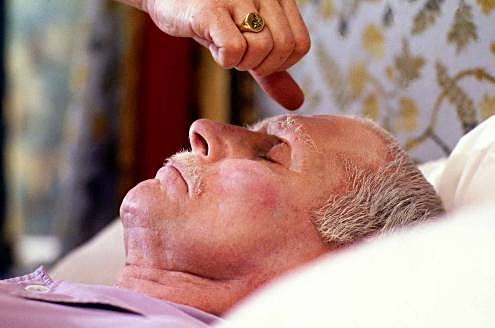Here is a link to the news release about the draft document, and here is the draft document itself.
I think that the guidance has many good points in it, but it also raises serious concerns because of its very strong promotion of the controversial Liverpool Care Pathway.
Even before the document gets started, it brings up the Liverpool Care Pathway and in a totally uncritical way presents it as the optimum way of caring for the dying. There is passing mention of hospices, but the Pathway has centre stage here.
I think it is a mistake to endorse it so strongly and unreservedly.
Like so many aspects of medical care today, the Pathway has become something of a political totem – the vehicle by which the Department of Health can claim it is advancing palliative care without the investment of building or supporting more hospices. The fact that it could be said to be championing a bargain basement kind of palliative care makes it a questionable move.
When patients are put on the Pathway, care is managed by ticking boxes, meaning less attention may be given to patients’ personal needs. The Pathway has been strongly criticised by experts like geriatrician Professor Peter Millard and others who have noted instances of improper use.
Many have pointed out that the Pathway amounts to ‘tick-box’ medicine, when individualised care is needed in the final stages of life.
Putting the Pathway into action depends on a diagnosis that death is approaching and that the person has begun “the dying phase”. This can be a difficult call, even for palliative specialists. Some versions of the Pathway give this task to a multidisciplinary team, none of whom may be experts in the final stages of life. How accurate are these decisions? And this is a critical decision. For most patients once a diagnosis of being in the dying phase has been made, the Pathway leads inexorably to death. In a few cases, reassessment leads to the pathway being abandoned. By suggesting tacitly that food and fluid may be withheld there is a risk that it may lead to terminal sedation – a practice now widely recognised as hastening death.
Elderly patients, or those with brain injuries or stroke and others may need to receive food and fluids by tube either temporarily or for a more extended time. This doesn’t always mean they are dying, but they are dependent on a tube for food and fluids. The bishops refer to this as clinically assisted nutrition and hydration (CANH). It is critical that nurses and doctors as well as relatives should have good care in such situations, and the Pathway could be a serious threat to such patients.
But the guidance document confuses the issue. At one point it says that CANH is not a medical treatment – at least, not like most other treatments.
But what about patients who decline medical treatment by a living will? The bishops' guidance says that patients have a legal right to refuse CANH, and for this purpose, it counts as a treatment. If that’s the case, a living will which says “I don’t want any medical treatment, just keep me comfortable,” could lead to a person being starved to death. This issue is not specifically canvassed in the bishops' document, but it is only a short step from what the document says to endorsing passive euthanasia.
The bishops’ document has a lot to say about medical, as opposed to spiritual, care. No doubt doctors were prominent in drafting it. When it comes to spiritual issues, however, some Catholics have spoken to me highly of it, and others have noted a weakness in the way the sacraments are treated.
Section 1.5.11 (about praying with patients) seems to suggest that hoping or praying for a person’s conversion would be wrong, which seems a very weak position to take – especially in view of the Caroline Petrie case – the nurse vindicated after offering to pray with a patient. Putting undue pressure on a person would be wrong of course, but praying for patients is surely right. I’ll certainly pray for the bishops’ conversion over the points I’ve mentioned above.
Comments on this blog? Email them to johnsmeaton@spuc.org.uk
Sign up for alerts to new blog-posts and/or for SPUC's other email services
Follow SPUC on Twitter
Join SPUC's Facebook group
Please support SPUC. Please donate, join, and/or leave a legacy

